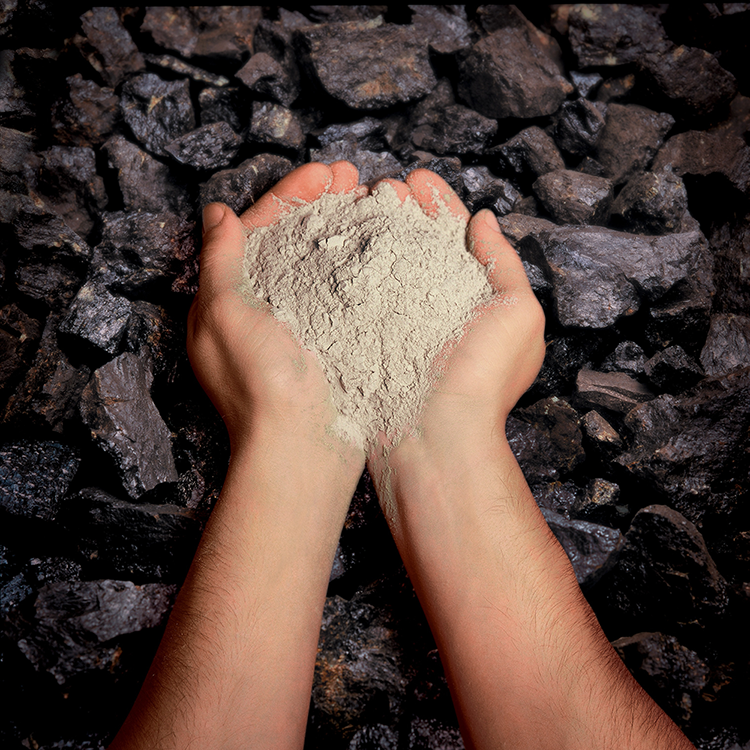The progress of fly ash in the extraction of alumina

Fly ash is a common industrial solid waste, mainly from coal-fired power plants and boilers in some factories. When pulverized coal is burned in the boiler, most of the components are burnt out, and some incombustibles remain in the flue gas. When the temperature in the furnace is high, these incombustibles become molten. When the temperature is lowered, these substances are rapidly cooled. The glass phase is formed, and the particles are spherical due to the effect of surface tension. A considerable part of my country’s coal is used for power generation, and the ash discharge per kilowatt of generator set is about 1 ton. With the development of industry, the demand for electricity is increasing, and the emission of fly ash is also increasing year by year. In 2013, the amount of fly ash discharged in my country reached 520 million tons. my country’s fly ash stockpile and annual emissions are huge, which needs to be developed and utilized urgently.
The chemical composition of fly ash is complex and changeable due to different origins and causes. It is mainly composed of elements such as silicon, aluminum, iron, calcium, sodium, titanium, magnesium, potassium, manganese and oxygen. The existing forms of these components are mainly oxides, followed by some in the form of silicates and sulfates. The content of CaO, SO3 and loss on ignition in the fly ash produced by the circulating fluidized bed boiler are generally higher than those produced by the pulverized coal boiler. Among them, the silicon content is the highest, followed by aluminum, which usually exists in the form of aluminosilicate. Generally, the content of SiO2 is 40-60%, and the content of Al2O3 is 20-30%. The iron content is generally 4 to 10%, which is relatively small and has good acid solubility. The content of CaO is generally 2.5 to 7%, and the range of loss on ignition varies greatly between 3 to 30%.
The main mineral composition of fly ash is aluminosilicate glass phase, quartz, mullite, corundum, iron oxide, carbon particles, sulfate, etc. The aluminosilicate glass phase includes glass microbeads and sponge-like glass body. The glass phase content is about 50%, up to 80% to 90%, which has good chemical activity and high chemical internal energy. The glass phase in fly ash is hollow spherical, the main components are SiO2 and Al2O3, SiO2/Al2O3=2~12; the crystal phase is mainly mullite, corundum, feldspar, quartz and a small amount of anorthite, hematite, Minerals such as periclase and magnetite, and mullite are microcrystalline. The fly ash particles are mainly composed of silica-alumina glass phase and a small amount of unburned carbon particles and unreacted minerals such as mullite and quartz. It consists of single beads and conjoined beads.
The appearance of fly ash is similar to cement, and it is in powder form. Due to the difference in fineness and carbon content, the color gradually changes from dark to light, from milky white to gray to gray-black, among which gray fly ash is more common. The particle size range of fly ash is 25-300 μm, and the average particle size is 40 μm; Fly ash is divided into low-calcium ash and high-calcium ash according to the calcium content. Generally, the specific gravity of low-calcium ash is 1.8-2.8g/cm3, and the specific gravity of high-calcium ash is 2.5-2.8g/cm3. Fly ash has high activity.
Fly ash is a common industrial solid waste with huge emissions, requiring a lot of land for storage, and at the same time polluting the air, land and groundwater to a certain extent, causing harm to people’s health. It is of great significance to society and environmental protection to comprehensively utilize the properties. At present, the global average comprehensive utilization rate of fly ash is estimated to be about 25%. The rate is increasing year by year and is expected to reach 70% in 2015. The utilization of fly ash mainly includes the preparation of building materials, admixtures of cement and concrete, autoclaved fly ash bricks, aerated concrete, extraction of alumina, silica, etc., utilization of floating beads, synthesis of molecular sieves, soil improvement, etc. ; Its utilization is mainly determined by the particle size and shape of the minerals in the fly ash and the ratio between the components.
Comprehensive Utilization of Fly Ash
1 Building Materials 2 Fillers 3 Adsorbent material 4 Valuable Element Recovery 5.Soil conditioner
According to the physical and chemical properties of fly ash, the proportion used in building materials, construction engineering and other fields is larger in the overall utilization of fly ash. The advantage of this utilization method is that the use of fly ash is large, the investment is small, and secondary pollution will not be caused, but this method is an extensive utilization, which wastes the value of fly ash as a secondary resource. According to the properties of fly ash, research and develop suitable process routes to extract high value-added products such as alumina and silica from fly ash, which can give full play to the role of fly ash as a secondary resource, which is also fly ash. An important direction of comprehensive utilization development.
